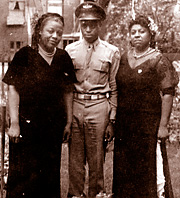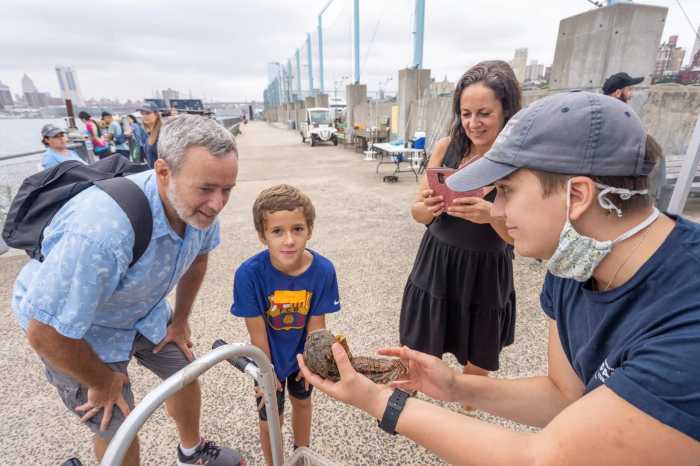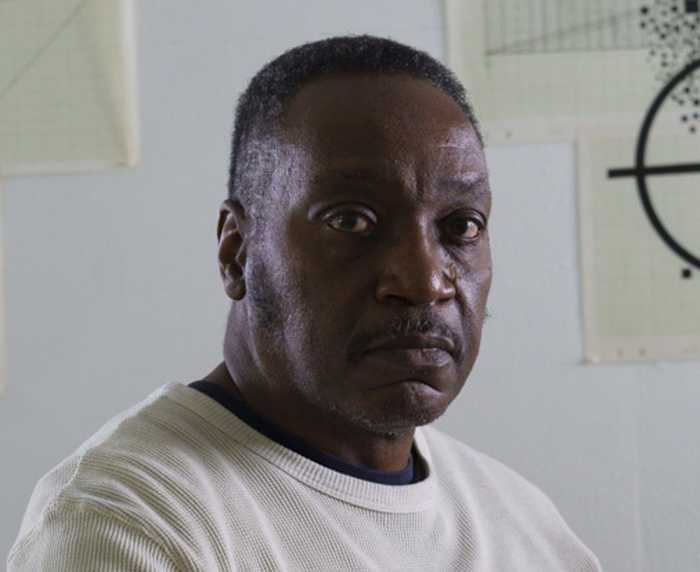It was the incident that would change the military forever — and, naturally, a Brooklynite was in the middle of it.
On April 5, 1945, the military police at the door of the officer’s club brandished machine guns as the famed Tuskegee Airmen approached to enter.
“You can’t go in there,” one of the MPs said. “If you go in, we’re gonna arrest you.”
“We went in anyway,” Brooklyn-born Lt. LeRoy Battle told GO Brooklyn.
Battle’s story of how he and his fellow Tuskegee Airmen fought the Nazis and then fought for their own rights at home is part of a stunning new exhibition on the Tuskegee Airmen, the first African-American fighter pilots, at Floyd Bennett Field on Feb. 17.
When Battle, now 85, was a busboy at the officer’s mess hall at Floyd Bennett Field in 1936, he saw the all-white Navy cadets there. But after he got drafted in 1943, he quickly learned that they were not his true comrades-in-arms.
Luckily, at Camp Upton on Long Island, Battle scored high on tests for an experimental program for “colored flyers” at Tuskegee, Alabama. Training as a bombardier and navigator, he learned to fly in tiny, rickety planes with nicknames like “Yellow Peril” and “The Vibrator.”
It was dangerous work, and many cadets never made it to graduation. Those who did went on to destroy hundreds of enemy planes in Italy and Germany. Tuskegee Airmen fighting in Europe dined alongside white officers — but a humiliating homecoming awaited them.
“When we returned to the States with chests full of ribbons, we were very proud of what we had done for our country,” Lt. Col. Willie Ashley recounts in “The Tuskegee Airmen: The Men Who Changed A Nation,” by Charles E. Francis.
“But when we went to the officer’s club, we were marched through the kitchen, out the back door and told not to return. We had helped to free everybody but ourselves.”
By the time Battle earned his wings in 1945, he said, “the war in Europe was winding down. They wanted to send us to the Pacific Theater. So, we were transferred to Freeman Field [in Indiana].”
When Battle arrived in the Midwest, he was quickly caught up in the rising controversy over racial segregation. Col. Robert Selway, his commanding officer, was determined to enforce the military’s segregation policy. He sent out a memorandum saying that the Tuskegee pilots would be barred from the Freeman Field officers’ club. The memo, according to Battle, was in direct conflict with military regulations, so the Tuskegee Airmen chose to ignore it.
“We went to the theater, then a bunch of us went over to the club,” Battle recounts. “We brushed by [the MPs], went in and sat down. Col. Selway … put us under barrack arrest. They had a barbed-wire fence around our area. We could look out and see the Italian POWs walking around, going to the PX. We would meet in the lavatory,” Battle chuckles. “In the lavatory, everybody’s equal.”
One of the 101 airmen arrested was Coleman Young, a labor organizer who would later become mayor of Detroit. Young led the latrine-based strategy sessions. The men were nervous about being brought up for court martial for disobeying a direct order in wartime, an offense punishable by hanging.
Lt. William Coleman, who had been a law student in Philadelphia, offered his advice: the Airmen must send a formal letter to Selway requesting counsel. An investigation ensued, and the Pittsburgh Courier ran a story favorable to the Airmen, Battle recalls.
Battle’s own mother, a short-order cook on the Pennsylvania Railroad, passed around a petition in support of the incarcerated men. Finally, only one officer, Roger C. Terry, was found guilty of refusing arrest and was fined — the other 100 were just reprimanded.
“For the record,” wrote some of the officers on their letters of reprimand, “the undersigned wishes to indicate … his unshakable belief that racial bias is Fascistic, un-American and directly contrary to the ideals for which he is willing to fight and die.”
Three years later, President Truman desegregated the troops. Ultimately, the records of all 101 Tuskegee Airmen involved in the Freeman Incident were cleared.
All told, 992 men graduated from the Tuskegee Army Flying School. Of these, 450 were sent into battle; eight won purple hearts, and 149 airmen were killed in action, during training or on routine missions. On the home front, the steadfast courage of the 101 men involved in the Freeman Incident paved the way for fairer treatment of blacks in America. Brave, intelligent and skilled, the Tuskegee Airmen battled racial prejudice, and won.
“Tuskegee Airmen” will be presented at 2 pm on Feb. 17 at the Ryan Visitor Center of Floyd Bennett Field. Signed copies of Lt. Battle’s autobiography will be available. Reservations required. For information call (718) 338-3799.

























